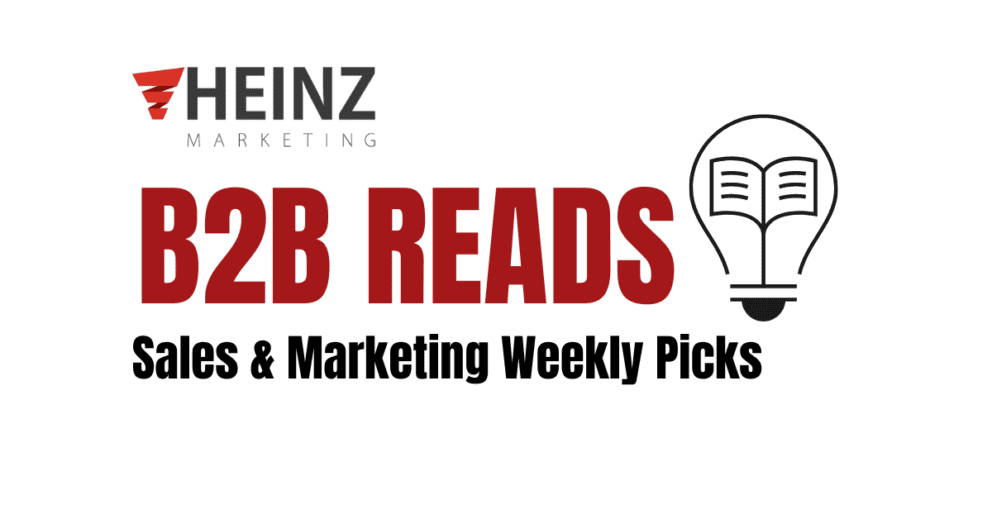How to Create a Path to Efficient Growth: 3 Key Foundations

By Maria Geokezas, Chief Operating Officer at Heinz Marketing
This article will look at the three foundations of efficient growth you can focus on right now that will help your business not only survive tough times but come back stronger when the market rebounds.
An influx of capital defined the past few years, with businesses receiving a record-setting amount of funding. Consequently, many well-funded companies massively expanded their marketing campaigns and signed up for new services—with little consideration of how the changes fit into their larger strategy.
After all, when money is flowing, it’s easy to overlook small inefficiencies. But all those oversights quickly add up when every cent counts.
Suddenly, companies had to evaluate and justify their investment decisions. And it’s why we’ve seen numerous companies forced to scale back their efforts.
Of course, this isn’t a new phenomenon.
We all know that markets are cyclical, so every up must come down—and businesses must understand how to succeed in every environment.
So, while there aren’t a lot of positives about a recession, the one advantage a slowdown gives you is time to hone your critical foundations. That way, when things pick up, you’re ready.
Start With Who, Not How
Who you target is is more important than how you reach them. So, you need to know your audience before you generate a distribution strategy.
If you launched an offer during a market windfall or expanded your target because it was inexpensive to test new audiences, it’s time to get back to the baseline. You aren’t looking for just anyone that might be interested. Instead, you need to know exactly who your perfect-match customers are.
What is the best way to identify that audience? Use your data.
You want to look hard at your current customers and define their similarities. Starting with firmographics, look for patterns, including:
- Industry
- Valuation
- Annual Revenue
- Number of employees
- Location
Then, take it a step further and talk to a few of your most successful customers. Give them an incentive to jump on a brief call where you can learn more about them and get insights that data alone can’t tell you.
Once you get a feel for who is the best fit for your products or services, you can create detailed, ideal customer profiles. When you have well-defined ICPs, you stop chasing every potential lead that might eventually convert.
Moreover, you can share your ICPs with your sales and customer success teams so everyone works from the same starting point.
Now that you know who you’re talking to, it’s time to narrow in on the path they take to become a lasting customer—including messaging, content development, and distribution.
Map Your Buyer Journey
Currently, buyers make most of their decisions before connecting with a company representative. In fact, they only spend 17% of their selection process meeting with potential providers. They spend the other 83% of their time evaluating solutions independently.
That means you must create content that drives awareness for potential customers and reinforces value for existing customers, so no matter where they are in their journey they can discover and accurately evaluate your offer without the guidance of a salesperson.
As you develop content, consider every stage of the buyer’s and customer’s journey.
Acquisition stages:
- Awareness
- Education
- Consideration
- Decision
Expansion stages:
- Onboarding
- Value Realized
- Growth
- Advocacy
For starters, who’s included in the buying team? And what do each of those people need to know to guide them toward the correct decision?
Take time to think about where your customers spend their time so that you distribute content through the most relevant channels—whether that be email, LinkedIn, or driving search traffic through SEO.
Creating a buyer journey specific to a persona and stage in the buying process allows you to control the path your potential customer takes, guaranteeing they’re equipped with the information they need to make the best purchasing decision.
Simplify Your Tech Stack
The final foundation you have to sort out is your tech stack. You must ensure your back-of-the-house technology and associated processes are running smoothly and support your business objectives.
Certainly, the right technology can help fill your pipelines. However, more often than not, we have duplicate technology that isn’t helping us move the needle.
Instead of focusing on only the primary function of your tools, you need to learn the nuances and integrations that allow you to tap into the tool’s full functionality.
For example, a number of products now come with built-in data and reporting features. So, if your essential tools have their own analytics, you may not need to pay for another analytics-only tool.
You want to create a list of what technology supports your strategy and what is only a bonus tool. Once you understand the functionality of your current tech stack, you can make a plan for what to keep–or eliminate–moving forward.
During a down period, you want to cut technology and tools that don’t pay for themselves two-fold. Ultimately, many “nice to have” tools aren’t worth the cost if they don’t support your foundations.
Foundations Before Tactics
Today, the pace of innovation ensures there’s always a new way to reach a fresh audience.
Too often, businesses turn to one-off tactics to navigate a slowdown, hoping the newest technology or marketing platform will solve their problems. But when you constantly change course, you lose sight of your foundations, which are what really fuel growth.
Efficient growth comes from speaking to the right audience with the right message at the right time—with each piece building on the last. And only once you’ve refined your foundations can you successfully switch to the tactical application.




